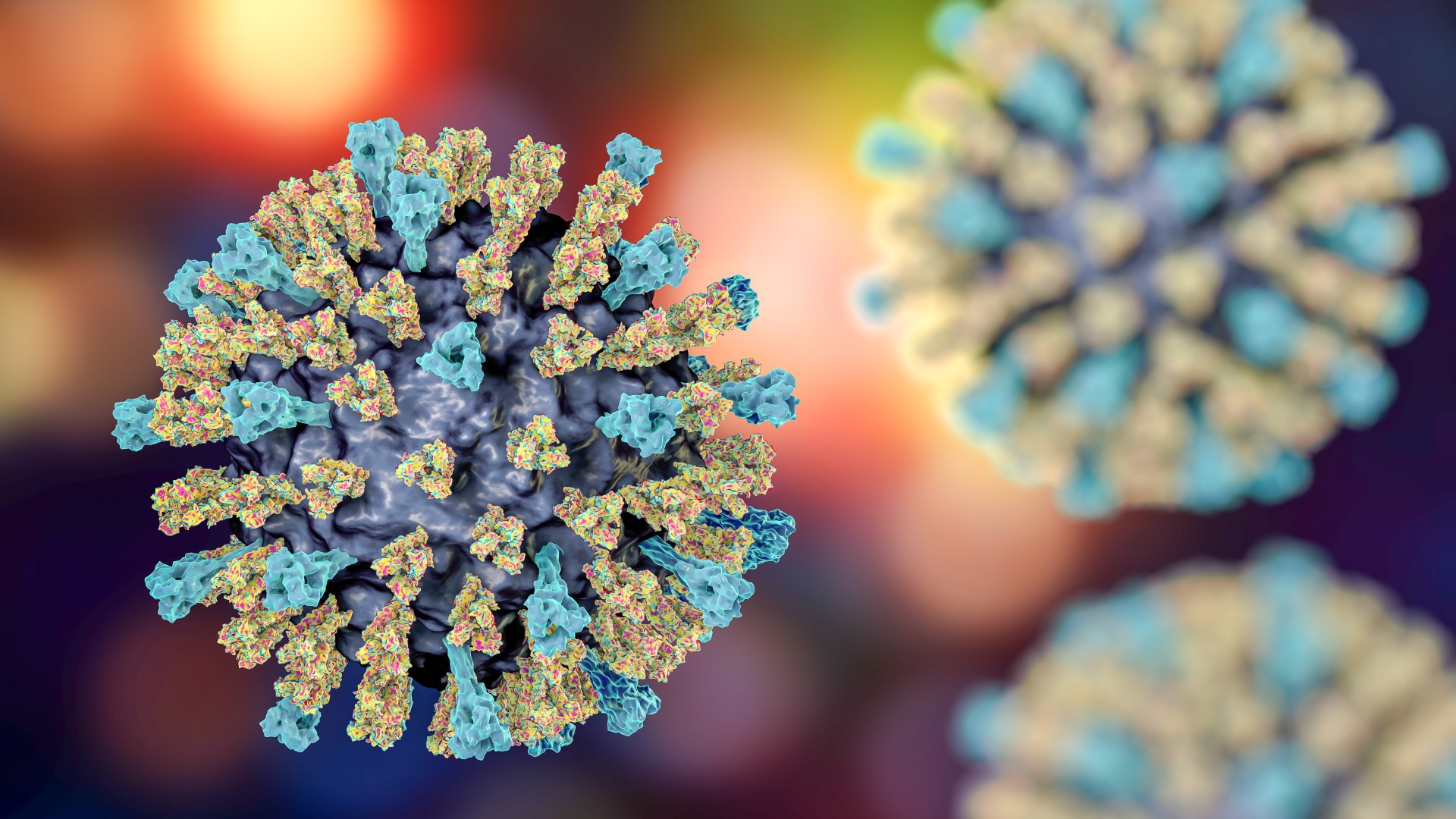300 people possibly exposed to measles at California hospital
Officials are trying to contact around 300 people who may have been exposed to measles at the UC Davis Medical Center Emergency Department on March 5, when an infected child was treated there.

Around 300 people may have been exposed to measles at a hospital in California after an infected child was seen by doctors there last week, public officials say.
In a statement released March 8, Sacramento County Public Health representatives (SCPH) announced that a child with measles, also known as rubeola, visited the UC Davis Medical Center Emergency Department between 12 p.m. and 5 p.m. local time on March 5. Approximately 300 people who were in the emergency department at the time may have been exposed to the virus, which is highly contagious, a spokesperson for the medical center told Live Science in an email. Exposure to the virus is most dangerous to those who haven't been fully vaccinated against measles, as a full course of the shots is incredibly protective.
"Unvaccinated persons or those with unknown vaccination status who were in the UC Davis Medical Center Emergency Department during the aforementioned time are at risk of developing measles from seven to 21 days after being exposed," SCPH officials said in the statement.
UC Davis Health, in consultation with local county health officers, is now contacting everyone who may have been exposed to the virus that day, the spokesperson told Live Science. The boy who'd caught measles is now recovering at home, CBS News reported.
Related: Measles deaths jumped over 40% from 2021 to 2022, CDC reports
Measles is a respiratory infection caused by a virus called Measles morbillivirus, which uses RNA, a genetic cousin of DNA, as its genetic code. It exclusively infects humans and is spread from person to person through droplets in the air, which can be expelled when an infected person coughs or sneezes, for instance. The disease is extremely contagious, and it's capable of remaining viable in the air or on contaminated surfaces for up to two hours.
Measles symptoms usually develop within seven to 14 days following exposure to the virus. Patients most often develop a high fever, cough, runny nose and red, watery eyes first. Around two to three days later, tiny white spots, known as Koplik spots, can appear on the inside of the mouth. Approximately one to two days after that, the signature red rash associated with measles begins to develop. This usually starts out on the face and can then spread downward to the neck, torso and lower body before starting to fade after around three to seven days.
Sign up for the Live Science daily newsletter now
Get the world’s most fascinating discoveries delivered straight to your inbox.
Symptomatic people can spread the virus from four days before to four days after the rash appears — but that said, people without any symptoms can still spread measles.
Measles can have serious health implications, especially in children under age 5, such as pneumonia. It's also known to have long-lasting impacts on the immune system, as it can cause a kind of "immune amnesia." Around 1 in 5 patients with measles in the U.S. are hospitalized, 1 in 1,000 develop brain swelling that can lead to brain damage, and between 1 and 3 in 1,000 die from the infection, despite receiving medical care.
The best form of protection against measles is vaccination: Two doses of the measles, mumps and rubella (MMR) vaccine is 97% effective at preventing the disease. Children are recommended to receive their first dose at 12 to 15 months old and a second shot between 4 and 6 years old. Adults who have gotten no doses or only one dose of the MMR vaccine can also receive it, with a few exceptions — for example, those who are severely immunocompromised or pregnant are advised not to get it.
Measles was eliminated from the U.S. in 2000, meaning the disease no longer circulates within the country, but measures are still needed to keep it in check. Because measles hasn't been fully eradicated worldwide, cases still occur, usually as a result of people coming to the country from a region where the disease still regularly spreads.
In recent years, cases have been rising in the U.S.: as of March 7, 45 cases have been reported in 2024, compared with 58 total in 2023.
In the statement, SCPH encouraged those who may have been exposed to measles at the medical center to check their immunization records to see if they are protected against measles and to monitor themselves for symptoms. Anyone who is pregnant or immunocompromised and was potentially exposed to the virus should contact a healthcare provider as soon as possible, as should caregivers of children who may have been exposed, they said.
This article is for informational purposes only and is not meant to offer medical advice.
Ever wonder why some people build muscle more easily than others or why freckles come out in the sun? Send us your questions about how the human body works to community@livescience.com with the subject line "Health Desk Q," and you may see your question answered on the website!

Emily is a health news writer based in London, United Kingdom. She holds a bachelor's degree in biology from Durham University and a master's degree in clinical and therapeutic neuroscience from Oxford University. She has worked in science communication, medical writing and as a local news reporter while undertaking NCTJ journalism training with News Associates. In 2018, she was named one of MHP Communications' 30 journalists to watch under 30. (emily.cooke@futurenet.com)
Measles has long-term health consequences for kids. Vaccines can prevent all of them.
100% fatal brain disease strikes 3 people in Oregon









